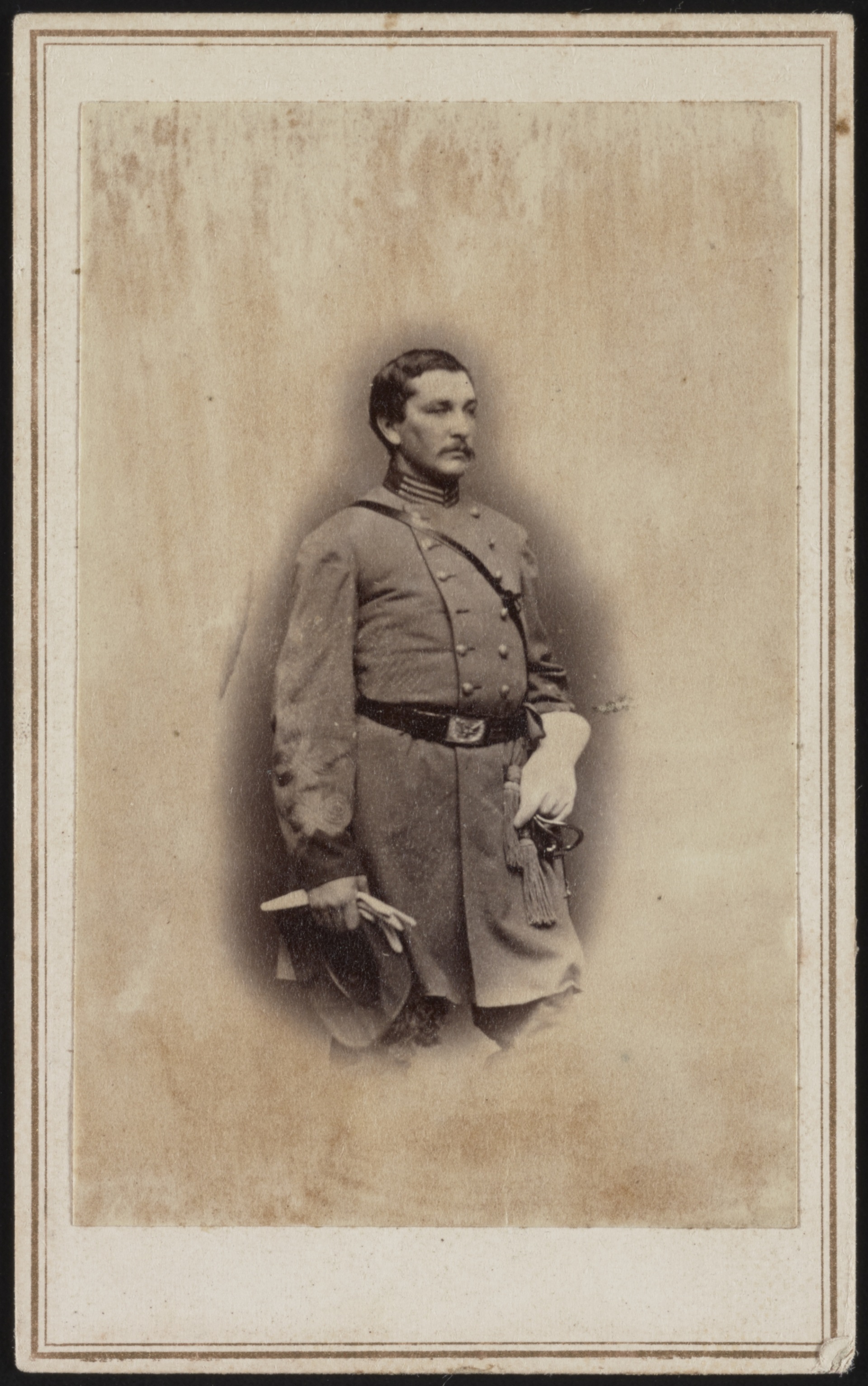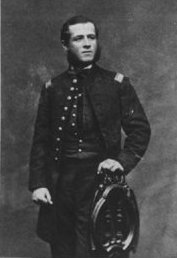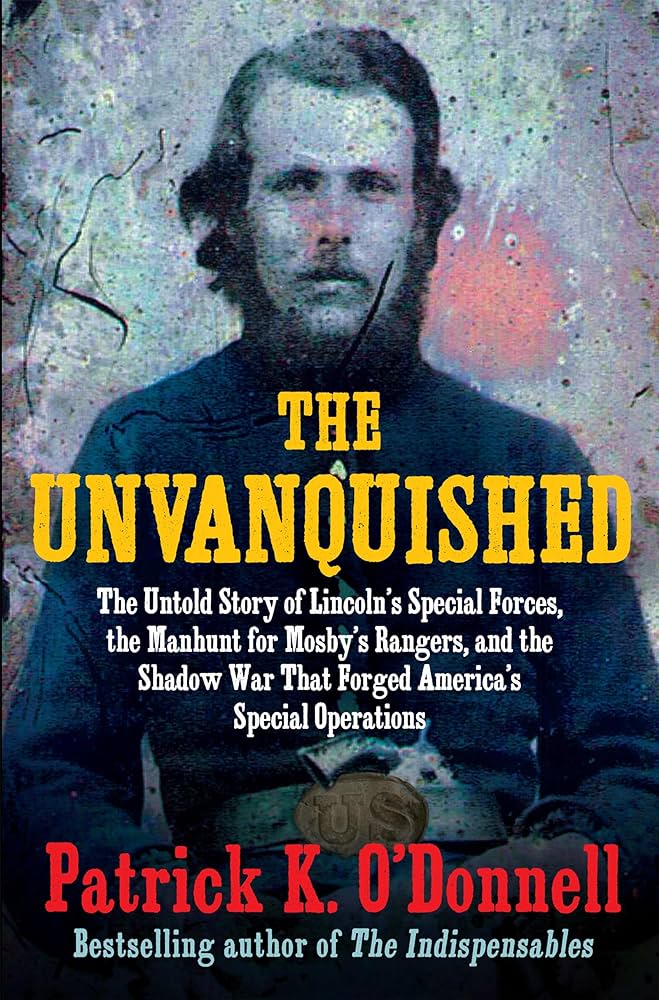
A key component of modern special operations is capturing or killing high-value targets. During the American Civil War, a specialized unit within the Union Army, the Jessie Scouts, was created to do just that.
Dressed in Confederate uniforms, they went after the South’s most dangerous men, setting up an epic series of engagements among elite units. These Union operatives were the US Army’s first hunter-killer teams. In February 1865, General Philip Sheridan unleashed the Jessie Scouts to hunt down the notorious partisan chief, Major Harry Gilmor.
Braving the bitterly cold weather, snow drifts, and icy roads, smooth-talking their way through Confederate pickets, two Jessie Scouts in Confederate butternut made their way through the enemy territory of the Shenandoah Valley in search of Gilmor’s lair. The expert Scouts accomplished their arduous task in a mere forty-eight hours. “Returned on Thursday, reported to the General the whereabouts of Harry Gilmor and command,” recorded Scout Arch Rowand.
Sheridan wasted no time in following up on the Scouts’ critical intelligence and swiftly assembled a force of 300 cavalry. Disguised in Confederate butternut, twenty Jessie Scouts rode ahead of the Union cavalry to “pass off as a body of recruits for Gilmor coming from Maryland.” They planned to inform Gilmor’s men deceptively that a large Union force of cavalry was just behind them to discern the exact whereabouts of the partisan leader.
“On Saturday morning, a force of cavalry (300) and twenty Scouts left this place [Winchester] for Moorefield, a distant fifty-eight miles. Traveling all Saturday night, we arrived at Moorefield Sunday morning just before day. Leaving the town surrounded by a strong picket, we struck South Fork River Road. I advanced with five Scouts. Two miles from the town, we came in sight of two large, fine houses: Williams and Randolph’s,” recalled Scout Arch Rowand.
Seeing horses in the stable, the Scouts surrounded Randolph’s house. Their commander Major Henry Young knocked on the front door, “What soldiers in the houses?”
Innocently, the servant woman gave the shocked Scouts the exact location of their prey: “Major Gilmor is upstairs.”

Lieutenant Colonel Harry W. Gilmor (Wikimedia Commons)
Hearts pounding with excitement at being so close to securing their prize, Young and four Jessie Scouts crept upstairs with pistols drawn. Pressing the barrel of his pistol against the sleeping man’s head, Young demanded, “Are you Colonel Gilmor?”
“Yes, and who in the devil’s name are you?” replied Gilmor, who later wrote, “Although dressed as Confederates, I saw at a glance what they were. But it was too late for a fight, for they had seized my pistols, lying on a chair under my uniform.”
“Major Young of General Sheridan’s staff.”
“All right. I suppose you want me to go with you?”
“I shall be happy to have your company to Winchester, as General Sheridan wishes to consult you about some important military affairs.”
Even held at gunpoint and surrounded by swarms of Union cavalrymen outside, Gilmor still held out hope for escape. “I had intended never to be taken alive,” he later wrote. He dawdled in getting dressed, “hoping my men would make a diversion in my favor.”
When hurried outside and mounted on his black mare, he “was already on the lookout for a break in the fence to make the effort.” One Jessie Scout complained, “As soon as Major Gilmor was in the saddle, he made an attempt to escape. I suspected this and was prepared for him. I caught his horse by the bridle rein. He made a second attempt. Again, I caught his horse.” Finally, the exasperated Scout threatened that if Young did not put their prisoner on an inferior horse, he would shoot Gilmor’s horse from under him. “Now that we had him, I was not going to let him escape.”
The full details of this remarkable story are told in my bestselling book, The Unvanquished: The Untold Story of Lincoln’s Special Forces, the Manhunt for Mosby’s Rangers, and the Shadow War That Forged America’s Special Operations. The book reveals the drama of the irregular guerrilla warfare that altered the course of the Civil War including the story of Lincoln’s special forces who donned Confederate gray to hunt Mosby and his Confederate Rangers from 1863 to the war’s end at Appomattox—a previously untold story that inspired the creation of U.S. modern special operations in World War II. The book also captures the story of the Confederate Secret Service.
While the Jessie Scouts and Young guarded the wily Gilmor, the notorious Confederate captain George W. Stump, who previously killed several Jessie Scouts, also fell into the hands of the Scouts on their journey back to Winchester.
Spying a nearby house, a small group of hungry Scouts rode over in search of food. The servant woman there revealed the house belonged to Stump, an independent partisan known as “Stump’s Battery” because of the numerous revolvers and carbines he kept with him at all times. “Knowing that Captain Stump . . . [had a] reputation of hanging and cutting the throats of Union prisoners, I made a further inquiry about him, telling the colored woman that I had important dispatches and must see him at once.” Going first to the church, then being informed the captain was visiting at his brother’s house a short distance down the road, two Scouts made their way to the residence.
“We discovered Captain Stump in the act of mounting his horse, I ordered him to surrender . . . we fired several shots, and he fell forward to the ground. He tried to regain his feet and reached for his revolver. But we were upon him before he could use it, and I pointed my revolver in his face and forced him to his knees. We immediately disarmed him.” Living up to his moniker, “he carried three pistols [on his belt], and on his saddle he had a pistol and a seven-shot carbine.”
The Confederate denied his identity, claiming to be his brother. As they marched him away, he lunged and attempted to grab another Jessie Scout’s revolver. At that, the capturing Scout dryly responded that he “would make a sieve out of him” if Stump tried that again.
When the group rejoined Young’s column, the Scouts informed the major that they had captured “Captain Stump, but he will not own up to it.” When Stump finally capitulated and admitted his true identity, Young served the Confederate an ultimatum. “I suppose you know that we will kill you. But we will not serve you as you have served our men, cut your throat or hang you. We will give you a chance for your life. We will give you ten rods start on your own horse, with your spurs on. If you get away, all right. But remember, my men are dead shots.”

Lt. Col. Henry H. Young (Wikimedia Commons)
Captain Stump stoically “smiled, rode out, and we gave him the word ‘Go.’ We allowed him about ten rods start, then our pistols cracked, and he fell forward, dead.”
Fearful that Gilmore would try to escape again, Young requested that the Scouts be allowed to press on alone with him. When his request was denied, Young rode off in a huff. Gilmor “felt my hope return, now that the lynx-eyed major had taken his departure, and [I] was busily concocting different schemes for my escape.” Unfortunately for the Confederate partisan leader, Young thought twice and sent back four of his Scouts, who “dashed” out of the forest just as Gilmor was about to make his third escape attempt.
Despite the Scouts’ eagle-eyed presence, Gilmor made one final failed midnight attempt. Once reunited with Young in Winchester, the Scouts had to guard Gilmor both from escape and from the menacing Northern mobs that turned out to gawk at the Rebel prize. Fighting through a mob at Harper’s Ferry, Young and Gilmore developed mutual respect. Young told Gilmor, “In case of attack, take one of my pistols and shoot right and left. They will have to walk over my dead body before they touch you.” On February 10, 1865, five days after the initial capture, Young and the Jessie Scouts delivered the guerilla leader to Fort Warren in Boston Harbor, “not losing sight of his charge until the gates were securely closed upon him.”
Patrick K. O’Donnell is a bestselling, critically-acclaimed military historian and an expert on elite units. He is the author of thirteen books, including his new bestselling book on the Civil War The Unvanquished: The Untold Story of Lincoln’s Special Forces, the Manhunt for Mosby’s Rangers, and the Shadow War That Forged America’s Special Operations, which makes a great Christmas gift and currently in the front display of Barnes & Noble stores nationwide. O’Donnell’s other bestsellers include: The Indispensables, The Unknowns, and Washington’s Immortals. O’Donnell served as a combat historian in a Marine rifle platoon during the Battle of Fallujah and often speaks on espionage, special operations, and counterinsurgency. He has provided historical consulting for DreamWorks’ award-winning miniseries “Band of Brothers” and documentaries produced by the BBC, the History Channel, and Discovery. Follow his work at PatrickKODonnell.com and on X @combathistorian.







